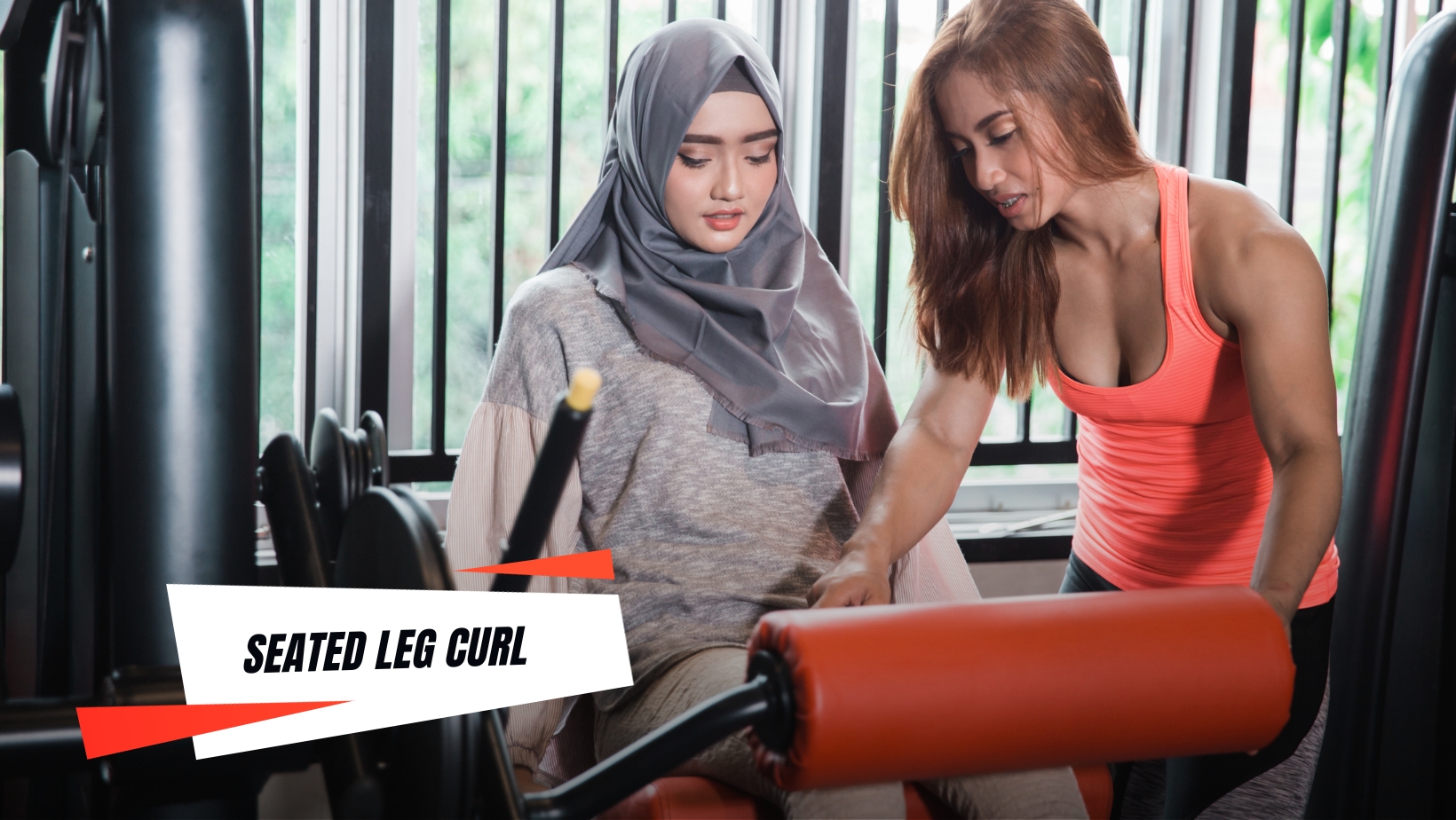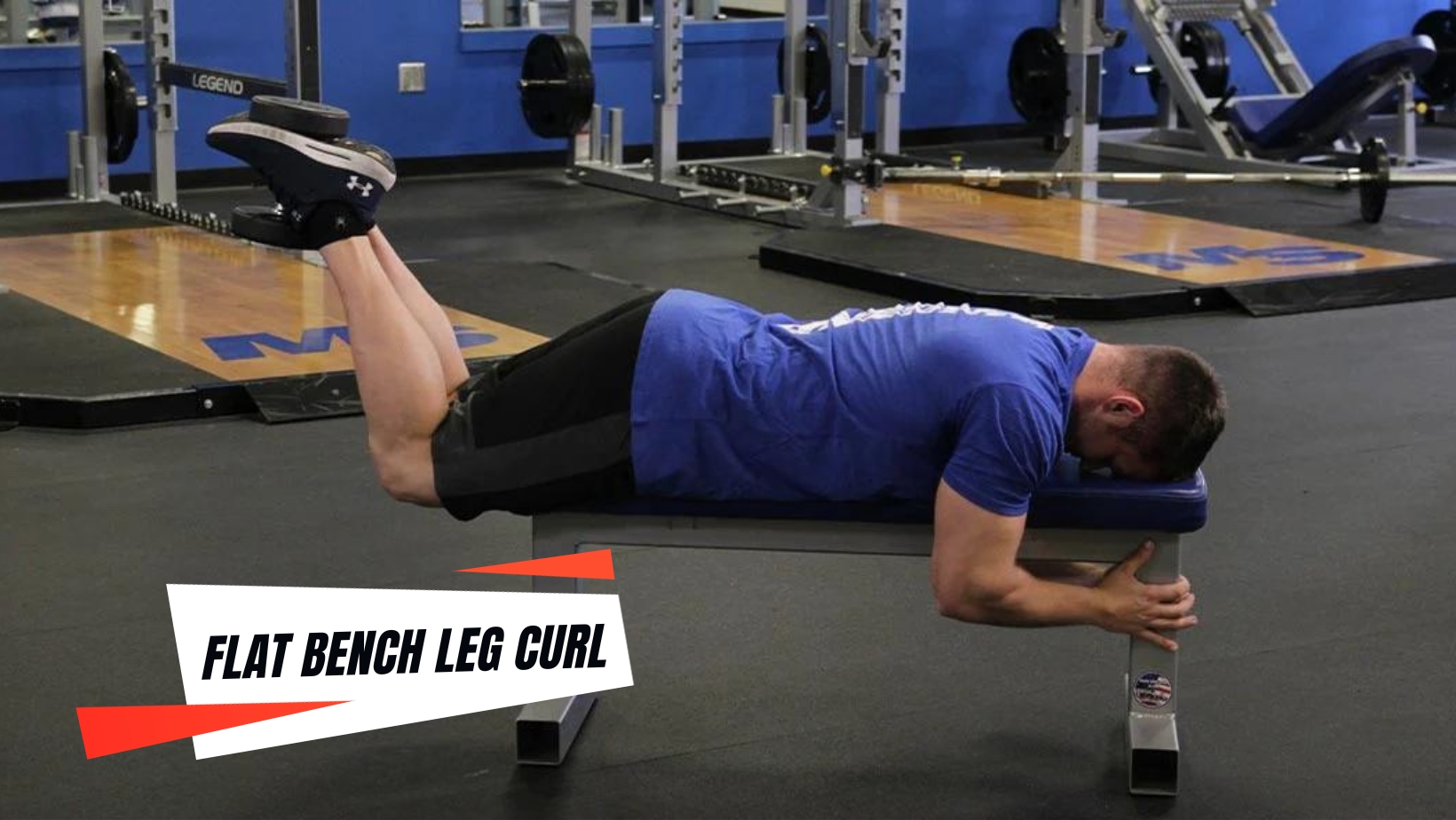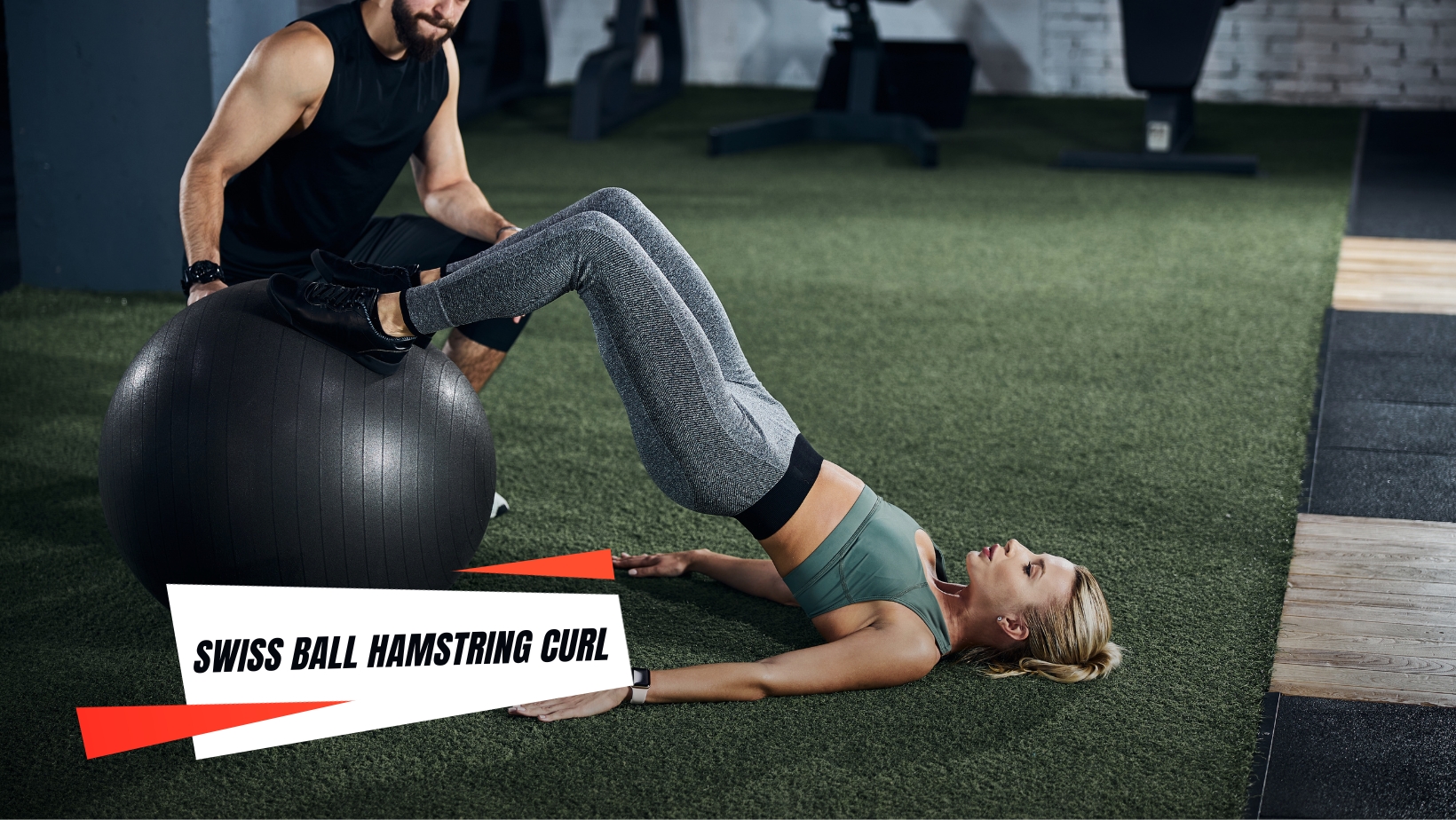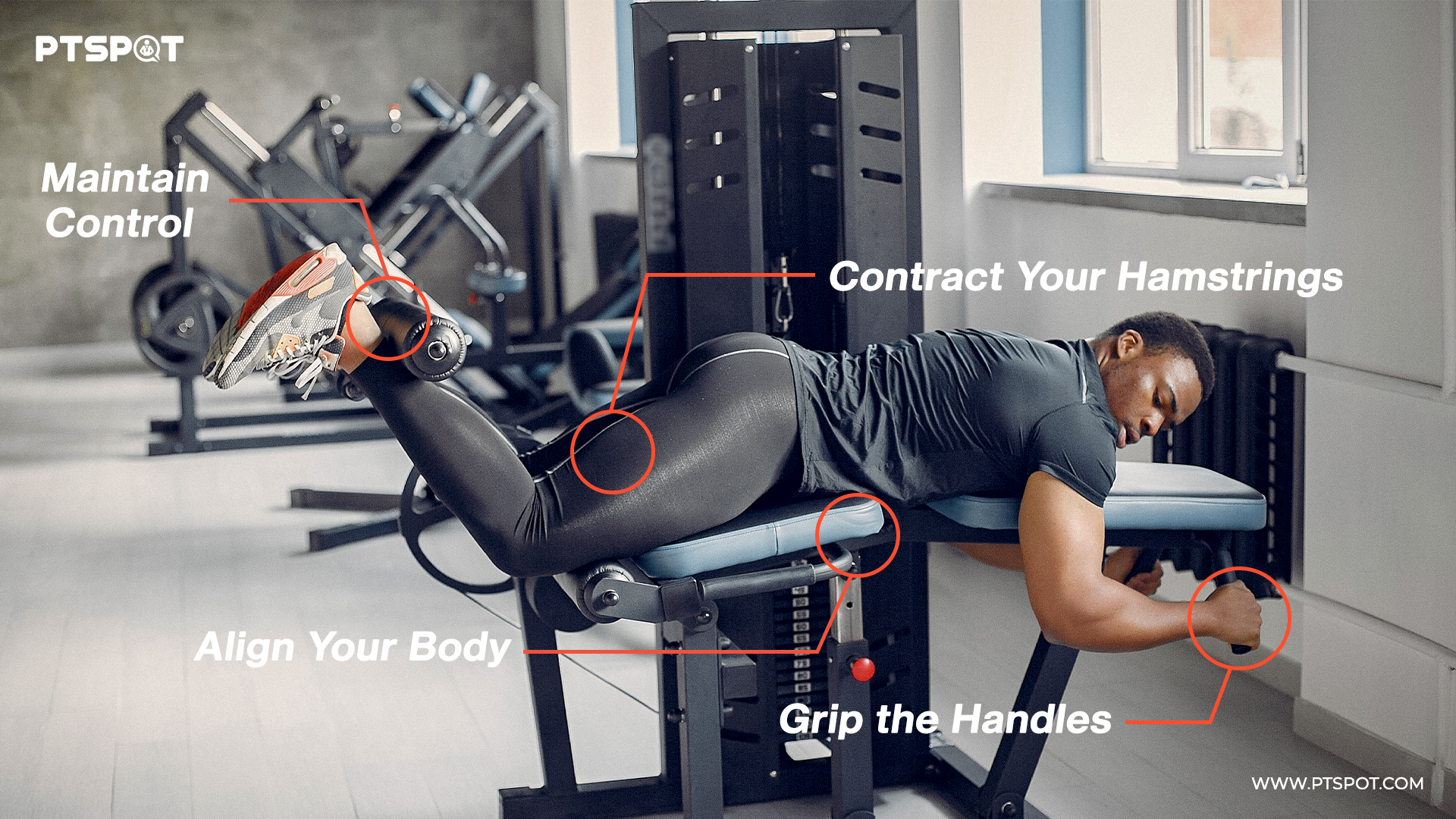Ready to master the leg curl exercise? Let’s discover the various forms, variations, and proper techniques to maximise your results!
Leg curls, also known as Lying Leg Curls or Hamstring curls, are a popular exercise that primarily targets the hamstrings but also engages the glutes and calves to a lesser extent. Performing leg curls correctly will help improve lower body strength, stability, and muscular balance. Here we dive into the exploration of variations such as seated leg curls, lying leg curls, and standing leg curls to target your hamstrings from different angles and intensify your workout.
How do you perform a proper form for leg curl?
Mastering the correct form for a leg curl is essential for optimising your workout routine and achieving the desired results. Remember, consistency, proper technique, and gradual progression are key to outranking your fitness goals. Now, let’s go forth and conquer the leg curl like a pro!
Starting Position:
To perform a proper hamstring curl, follow these steps to ensure a strong starting position:
- Adjust the Machine: Position yourself on the leg curl machine with your stomach facing down and your legs fully extended. Adjust the machine’s pad to rest just above your Achilles tendon.
- Grip the Handles: Grasp the machine’s handles firmly, keeping your upper body stable throughout the exercise.
- Align Your Body: Ensure your hips, knees, and ankles are in a straight line, maintaining a neutral spine.
Lowering Phase:
Now that you’re in the starting position, it’s time to focus on the lowering phase. This phase engages the lower group of muscles in your legs, including the hamstrings and glutes. Follow these guidelines for optimal results:
- Contract Your Hamstrings: Begin by slowly curling your knees and pulling your heels for this hamstring exercise. Keep your movements controlled and avoid any jerking or swinging motions.
- Maintain Control: As you lower the weight, focus on maintaining a slow and controlled motion. Keep your core engaged and prevent any excessive arching of your lower back.
- Feel the Stretch: Lower the weight until you feel a gentle stretch in your hamstrings, ensuring that you maintain tension throughout the muscle group.
Engaging Muscle Groups:
A leg curl primarily targets the hamstring muscles, but other muscle groups are also involved. Here’s a breakdown of the key muscles worked during the exercise:
- Hamstrings: The main focus of the leg curl, the hamstrings are a group of muscles located at the back of your thighs. They contribute to knee flexion and play a crucial role in lower body strength and stability.
- Glutes: While the hamstrings take the lead, the gluteal muscles, including the gluteus maximus, medius, and minimus, are activated as stabilisers during the lying curl. This engagement enhances overall lower body strength and balance.
- Calves: Though not the primary target, your calf muscles, specifically the gastrocnemius and soleus, work isometrically to stabilise your ankle joint throughout the leg curl movement.
Whether you want to build strength, increase muscle mass, or improve overall fitness, our trainers from PTSPOT will guide you every step of the way.
What are the Leg Curl Variations?
When it comes to leg curls, there are several variations that can add diversity and challenge to your workout routine. Let’s explore some of the key leg curl variations:
Seated Leg Curl:

The seated leg curl is a classic variation performed on a seated leg curl machine. This machine allows you to sit upright with your legs extended and curl the weight by bending your knees. The exercise primarily targets the hamstrings and provides a controlled and stable environment for the exercise.
Barbell Leg Curl:

The barbell leg curl is an alternative to machine-based leg curls. To perform this variation, you lie face down on a flat bench with your legs extended off the edge. Place a barbell between your feet, grip it firmly, and curl your legs towards your glutes by bending your knees. The barbell leg curl engages the hamstrings while also challenging your core stability.
Standing Hamstring Curl:

The standing hamstring curl is a free-weight variation that can be performed with dumbbells or resistance bands. Stand upright, holding the weights in your hands or attaching the bands to a stable anchor point. While keeping your upper body stable, bend your knee and curl your heel towards your glutes. This variation targets the hamstrings and incorporates balance and stability.
Flat Bench Leg Curl:

The flat bench leg curl is another variation that can be performed without specialised equipment. Lie face down on a flat bench, with your legs extended and the tops of your feet resting on the bench’s edge. Engage your hamstrings to curl your legs towards your glutes. This variation requires more core stabilisation and allows for a greater range of motion compared to machine-based leg curls.
Swiss Ball Hamstring Curl:

The Swiss ball hamstring curl adds an element of instability to the exercise, further engaging your core leg muscles. Lie on your back with your feet resting on a Swiss ball. Lift your hips off the ground and curl the ball towards your glutes by bending your knees. This variation targets the hamstrings, glutes, and core while challenging your balance.
Remember, regardless of the leg curl variation you choose, it’s essential to adjust your back and maintain proper form throughout the exercise. Keep your back straight, engage your core, and avoid excessive arching or rounding. Adjusting steps and reps to a comfortable and controlled level is crucial to ensure optimal muscle activation and reduce the risk of injury.
As always, consult with Fitness professionals to determine the most suitable variations based on your fitness level and goals.
How do you use a leg curl machine effectively for maximum results?
The leg curl machine is a fantastic tool for hypertrophy and targeting your hamstrings. It is an isolation exercise that isolates and works the hamstrings individually, allowing for focused development and stronger muscles.

- Start by adjusting the machine to fit your body. Lie face down on the bench with your legs extended and the back of your ankles resting against the machine’s pad. Ensure that your body is flat on the bench, maintaining a neutral spine.
- Grasp the handles firmly to stabilise your upper body throughout the exercise. This will help you maintain proper form and concentrate the effort on your hamstrings.
- When performing the hamstring curl, focus on using a full range of motion. Slowly curl your legs towards your glutes, contracting the hamstrings at the top of the movement. Lower the weight back down in a controlled manner, feeling a stretch in your hamstrings.
- Choose an appropriate weight that allows you to perform the exercise with proper form and a challenging level of resistance. Aim for a moderate number of reps, typically in the range of 8 to 12, to stimulate muscle growth and strength.
- Remember, the leg curl machine primarily targets the hamstrings, so be mindful of engaging and contracting those specific muscles during each repetition. Focus on the mind-muscle connection to optimise the effectiveness of the exercise.
By using the leg curl machine effectively, you can isolate and strengthen your hamstrings, promote muscle growth, and enhance the overall development of your lower body. Combine it with a well-rounded leg workout routine for balanced leg strength and stability.
Achieve your fitness goals with PTSPOT, your trusted fitness partner!
What are the common mistakes while performing Leg Curl?
When performing leg curls, it’s important to be aware of common mistakes to avoid. Here are some common hamstring curl mistakes to watch out for:
Using the Wrong Muscles:
One common mistake is relying on muscles other than the hamstrings to perform the movement. Leg curls primarily target the hamstrings, not the lower back or glutes. Avoid using a deadlift-like motion by lifting your torso or curling your lower legs instead of your upper legs.
Incorrect Machine Setup:
Improperly adjusting the exercise machine can affect your form and hinder your results. Make sure the machine is set up to fit your body properly, with the back of your ankles resting against the machine’s pad. This will help ensure proper alignment and engagement of the hamstrings.
Incomplete Range of Motion:
Failing to complete the full range of being in motion is another common mistake. It’s important to fully extend your legs during the starting position and then curl your heels toward your glutes as far as comfortably possible. This ensures that you’re engaging the hamstrings through their entire range of motion.
Neglecting the Bicep Femoris:
The bicep femoris is one of the hamstring muscles that can be easily neglected. It is located on the outer part of the hamstrings. Ensure that you’re focusing on engaging and contracting all the hamstring muscles, including the bicep femoris, during lying curls.
Lack of Progression:
Another mistake is not gradually increasing the resistance or weight over time. To build strength and continue making progress, it’s important to gradually increase the load as your muscles adapt. This can be done by adding weight plates or adjusting the resistance settings on the machine.
Ignoring One-Leg Variations:
Neglecting one-leg variations is a missed opportunity to target each leg individually, improve muscle imbalances, and enhance stability. Incorporate single-leg curl variations into your routine to ensure balanced strength development.
Avoiding common leg curl mistakes is crucial for maximising your results and preventing injuries. But why stop there? Take your fitness journey to the next level with PTSPOT. Our expert trainers and personalised programs can help you achieve transformative results and reach your full physical potential.
Don’t settle for mediocre gains. Unleash your true potential with PTSPOT. Say goodbye to guesswork and hello to effective, targeted training!





